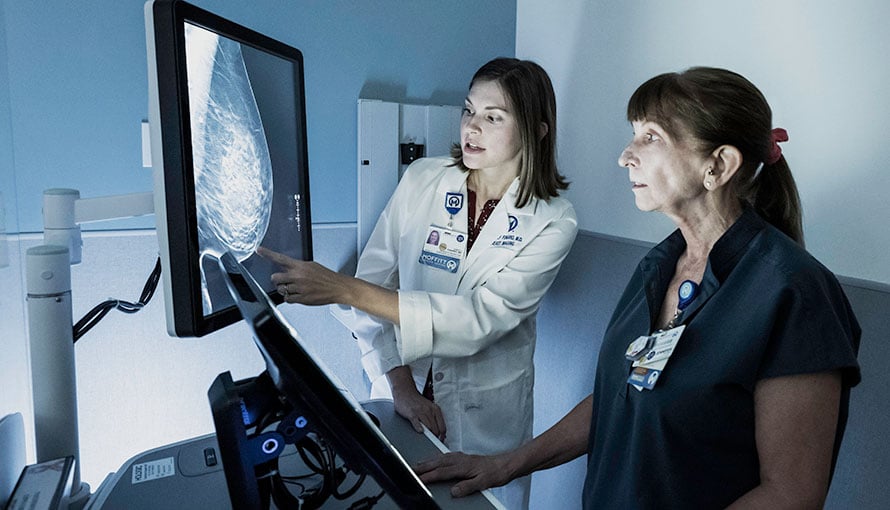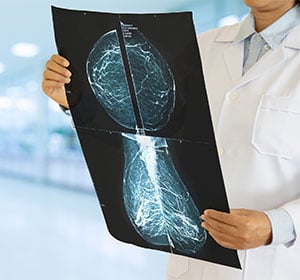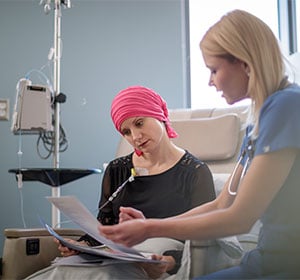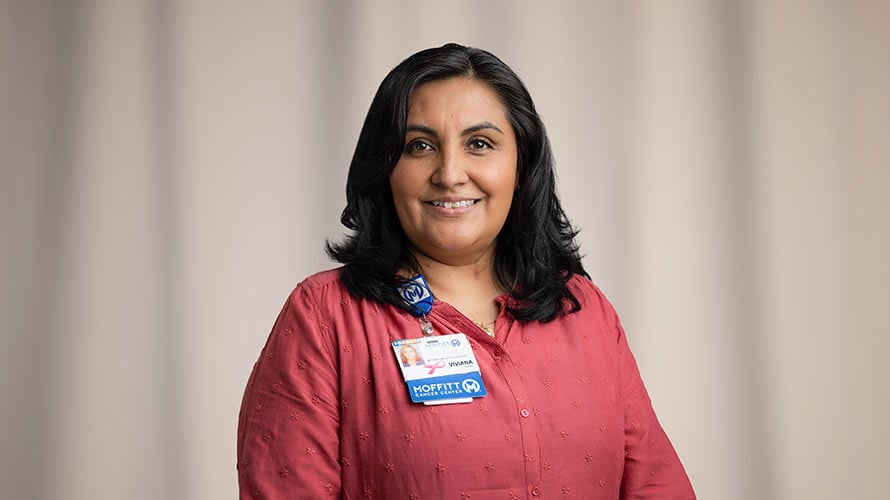Breast Cancer Treatment Information
Breast cancer develops as a result of the uncontrolled growth of abnormal breast cells. While healthy breast cells are able to continually renew themselves in an orderly fashion, abnormal cells may divide haphazardly, without control or order. The extra cells created can form malignant, or cancerous, tumors which, if left untreated, can spread to other parts of the body. There are many different types of breast cancer. The most common are invasive ductal cancer, which begins in the duct cells, and invasive lobular cancer, which begins in a lobule, where milk-producing glands are present. A patient facing a breast cancer concern likely has many questions. Choosing the right cancer center for consultation, diagnosis and support is the most important step toward achieving lasting, positive results.
Breast cancer symptoms
 Recognizing the signs and symptoms of breast cancer can help ensure a prompt diagnosis. Breast cancer can cause a wide array of symptoms, including:
Recognizing the signs and symptoms of breast cancer can help ensure a prompt diagnosis. Breast cancer can cause a wide array of symptoms, including:
- Pain in the breast
- A lump or thickening of tissue in the breast or underarm
- An unexplained change in the size or shape of the breast
- Suddenly asymmetrical breasts
- Irritation in the breast skin
- Redness or warmth in the breast skin
- A change in the texture of the breast skin (often featuring a thick, pitted appearance resembling an orange peel)
- Dimpling on the surface of the breast
- Unusual nipple tenderness
- Nipple inversion
- Nipple discharge (not including breast milk)
These symptoms may affect one or both breasts. It’s important to remember that having one or more of these symptoms doesn’t necessarily indicate breast cancer. In fact, many lumps are benign (noncancerous). Only a trained medical provider can offer an accurate diagnosis, so upon noticing any unusual changes in one or both breasts, it’s important to promptly talk to your doctor.

Breast Cancer Outcomes
The goal of any cancer treatment is to achieve the most favorable outcome while minimizing side effects and ensuring the best possible quality of life. On average, Moffitt's breast cancer treatment survival rates exceed 1.5 times the national average.
Breast cancer causes and risk factors
As noted above, breast cancer occurs when abnormal breast cells grow uncontrollably and form malignant tumors. The scientific community is still working to determine exactly what causes this to happen. With that being said, researchers have identified certain risk factors that can make someone more likely to develop breast cancer, including:
- Being a woman
- Being over age 55
- Starting to menstruate before age 12 or entering menopause after age 55
- Taking hormone therapy after menopause
- Giving birth for the first time after age 30 or not at all
- Having previously been diagnosed with breast cancer
- Having undergone chest radiation to treat another type of cancer
- Having a first-degree female relative (a mother, sister or daughter) who was diagnosed with breast cancer, especially if she was diagnosed before menopause
- Inheriting certain gene mutations (such as BRCA1 and BRCA2)
- Using birth control medication, shots or implants
- Being overweight
- Following a sedentary lifestyle
- Drinking alcohol
- Using tobacco
Having one or more of these risk factors does not mean that someone will get breast cancer; it simply means that he or she has a greater likelihood of developing this malignancy.
Types of breast cancer
As previously stated, there are numerous different kinds of breast cancer, the most common being invasive ductal cancer and invasive lobular cancer. The various types of breast cancer include:
- Ductal carcinoma in situ
- HER2-positive breast cancer
- Invasive ductal carcinoma
- Invasive lobular carcinoma
- Inflammatory breast cancer
- Lobular carcinoma in situ
- Male breast cancer
- Metastatic breast cancer
- Paget disease of the nipple
- Triple negative breast cancer
Breast cancer diagnosis
 Because breast cancer generally doesn’t cause noticeable symptoms in the early stages, it’s important to be vigilant about noting any abnormalities. While mammograms are a highly effective screening tool, they don’t detect all cases of breast cancer, so it’s a good idea to perform monthly self-examinations to check for any signs of this malignancy.
Because breast cancer generally doesn’t cause noticeable symptoms in the early stages, it’s important to be vigilant about noting any abnormalities. While mammograms are a highly effective screening tool, they don’t detect all cases of breast cancer, so it’s a good idea to perform monthly self-examinations to check for any signs of this malignancy.
If someone is experiencing the symptoms of breast cancer, he or she should turn to a physician for an accurate diagnosis as soon as possible, since this malignancy is easier to treat during its early stages. A physician will usually begin by speaking to the patient about his or her medical history and performing a physical examination. If this discussion and examination suggest the presence of breast cancer, the physician will likely order further diagnostic testing, which may include:
- Core biopsy
- Digital mammography
- Fine needle aspiration
- Full-breast tomosynthesis
- Galactography (also known as “ductography”)
- Magnetic resonance imaging (MRI)
- Stereotactic biopsy
- Surgical biopsy
- Abbreviated breast MRI
Breast cancer staging
If a physician determines that a patient has breast cancer, he or she will need to assign a stage by classifying the malignancy based on its extent, location, genetic makeup and sensitivity to certain hormones, as well as whether it tests positive for certain growth-promoting proteins. Breast cancer staging is often used when describing a malignancy, determining a patient’s prognosis and developing a treatment plan.
Breast cancer stages range from Stage 0 (the breast cancer cells are confined to the lining of the milk ducts or breast lobes) to Stage 4 (the breast cancer cells have entered the bloodstream or lymphatic system and spread to distant areas of the body). Physicians most commonly stage breast cancer using the TNM system, which considers the tumor size, the lymph node status (the number and location of any cancerous lymph nodes) and metastasis (whether the malignancy has spread to any other areas of the body). Staging may also take the following into account:
- The tumor’s grade - This ranges from Grade 1 (where the cancerous cells appear relatively normal and the tumor is growing slowly) to Grade 3 (where the cancerous cells appear very abnormal and the tumor is growing quickly).
- The tumor’s HER2 status - Tumors that contain excessive amounts of human epidermal growth factor receptor 2 (HER2) tend to grow and spread more quickly.
- The tumor’s hormone receptor status - Certain hormones can accelerate tumor growth, including estrogen and progesterone. A tumor will be classified as estrogen-receptor-positive (ER+) if it has receptors for estrogen, and progesterone-receptor-positive (PR+) if it has receptors for progesterone.
Breast cancer treatment
 There are a number of standard treatments available for breast cancer, and a physician will recommend the course of treatment that’s best suited to a patient’s specific condition. Some of the most common breast cancer treatment methods include:
There are a number of standard treatments available for breast cancer, and a physician will recommend the course of treatment that’s best suited to a patient’s specific condition. Some of the most common breast cancer treatment methods include:
- Chemotherapy
- Hormone/endocrine therapy
- Radiation therapy
- Surgery (including lumpectomies and mastectomies)
- Targeted therapy
- Immunotherapy
Our approach
At Moffitt Cancer Center, the Don & Erika Wallace Comprehensive Breast Program boasts a multispecialty, full-service clinic that offers the latest in preventive care, support and cancer information. In a single location, our breast clinic provides our patients with all of the services they need from a cohesive team of doctors and other experts who specialize in breast cancer, including:
- Fellowship-trained surgeons
- Medical oncologists
- Pathologists
- Fellowship-trained radiologists
- Radiation oncologists
- Plastic surgeons and breast reconstruction experts
- Social workers
- Fertility preservation specialists
- Genetic testing and counseling specialists
During a weekly interactive session, or tumor board review, these experts meet to discuss each new patient’s course of treatment. They work together to create highly individualized care for our patients in order to offer them the best chance at beating cancer. Whether the initial concern is an abnormal mammogram result, a family history of breast cancer, a breast lump or another symptom, patients benefit from our state-of-the-art diagnostic and treatment options, which include advanced INTRABEAM® radiation treatment, tomosynthesis 3D mammography, ABUS (Automated Breast Ultrasound System) and ultrasound-guided core needle biopsy.
As a pioneer in cancer research, Moffitt is proud to be the only National Cancer Institute-designated Comprehensive Cancer Center based in Florida. Our patients benefit from a broad range of cutting-edge clinical trials and new therapies to treat breast cancer. Each year, we treat more than 1,000 newly diagnosed breast cancer patients, as well as hundreds more who choose Moffitt for treatment when they have a recurrence. We are proud that our treatment and support can provide our patients with an enhanced quality of life.
To learn more about our services and how to prepare for your appointment, please call 1-888-663-3488 or you can submit a new patient registration form.
Support the Future of Breast Cancer Research and Treatment
When you support Moffitt Cancer Center, you help make breakthrough breast cancer research and innovative treatments possible.
Give now or learn more about ways you can support the Breast Oncology Program. For more information, call toll-free 1-800-456-3434, ext. 1403.
Helpful links:
- INTRABEAM® breast cancer radiation treatment
- Breast Reconstruction Book (PDF)



